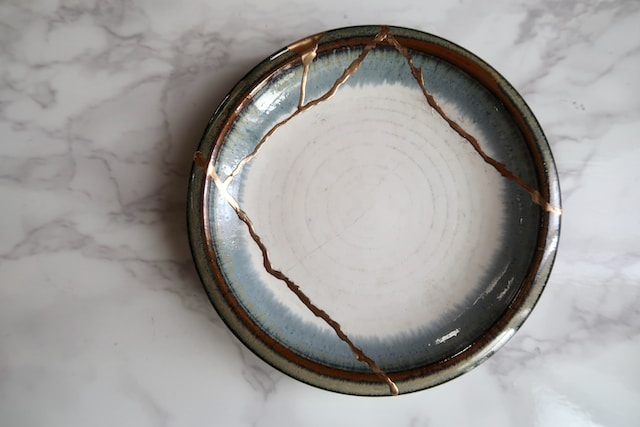Okay, first…I don’t usually say “literally.” I generally say, “little-larry.” My youngest said this probably a decade or more ago, and I vowed to always say it like that.
Whew. Glad that’s out of the way (LOL).
One of the things I LOVE about doing this work is that I must practice what I preach. Whatever advice or professional opinions I give, I also have to do. I mean, I’m a trauma survivor, it makes sense, and what kind of trauma recovery coach would I be if I didn’t live this way?
Mapping Each Small Healing Step

I am known for saying, “Trauma recovery is slow work. Every step counts.”
One of the ways that I practice what I preach is to keep track of how I’m changing. If every step *does* indeed count, then I need to celebrate the tiniest to the hugest steps that I take in my own healing journey.
About a year ago, I applied to be a speaker at the HealtheVoices conference for online advocates. I work as an advocate for trauma survivors who have PTSD symptoms and have not served in the military. (There’s a longer story about this, but that is for a different post).
My presentation for this conference was accepted.
My nervous system REVOLTED.
I couldn’t sleep. I felt nauseous. My body developed cold sores and hemorrhoids. Constant sweating. I fell down and rolled my ankle – an odd but consistent sign of high stress.
These symptoms went on for weeks, ramping up as the conference weekend got closer. We arrived at the hotel/venue, and I was *miserable.* I felt completely self-conscious. My inner critic would NOT shut up.
At that point, I had gotten used to the symptoms, so much so that I didn’t realize just how miserable my nervous system had been until I was done giving my presentation.
As soon as I was done speaking, my entire nervous system relaxed. I cried with relief.
I Got VERY Curious
After I got home, I talked with my therapist and colleagues about what had happened over those several weeks leading up to and including the conference.
In fact, I was taking a trauma recovery class at the time, and one morning during our class check in, I explained what I had experienced.
“I would get very curious about that,” the instructor said.
My first response was, “UGH.” But I knew the wisdom in her words, so I decided to get very curious.
By the time my next therapy appointment rolled around, I had A LOT to process.
The Golden Child Syndrome
I’ve long been an over-achiever. My role in my toxic family system was the Golden Child, the perfect one who doesn’t have needs or feelings or thoughts. She does what she is told and does it “right” the first time. (whew, even typing all of that stressed me out)
I was raised to be a people pleaser and rule follower. No thoughts, no feelings, no needs, and if I had them, they were not important, anyway.
Especially DO NOT rock the boat or challenge anyone or anything or express something that has not been specifically given to you to express (this includes the permission to express it).
One of the impacts of the Golden Child pressures in my life was to perform for love. A compliant and quiet woman, considering all other needs and wants first. I was exhausted and depressed for *decades*. Not exaggerating. This has played out in many areas: school, work, my first marriage. The prevailing feeling was, “You are not good enough, and you need to prove you are good enough so that you will be loved.”
First, this is a lie. I am good enough. You are good enough. We are worthy of love simply because we exist.
Second, this is a never-ending cycle that does not reap love and acceptance.
No matter how hard I tried or how many goals I achieved or how much I did for *everyone else* and how much I sacrificed my own mental and physical self, it would *never* be enough.
And here’s the clincher: I WAS DOING THIS TO MYSELF.
I Figured Out Why My Nervous System Revolted

With trauma, strategies work until they don’t.
This cycle of living as the Golden Child kept me safe for a long time, through my childhood and getting into college and starting my teaching career and into my first marriage.
But as I cried buckets of tears with my therapist, trying to process through why my body had revolted over this speaking gig, I yelled out, “I JUST WANT TO BE IMPORTANT. I JUST WANT TO BE LOVED.”
The strategy – the overachieving, “perfect”, Golden Child – didn’t work anymore.
In fact, using this strategy made me physically sick.
Now the task was figuring out what DOES work. What does my nervous system want? Why do I strive and what do I strive for now?
I didn’t know, so I took time off from striving, over-achieving, and professional over-working. For six months, I did not apply for anything. I did not respond to calls for essays, presentations, speaking opportunities, podcasts, classes – nothing.
I focused on my nervous system, my relationships, and my clients.
This was HIGHLY uncomfortable, and I had many opportunities to get curious.
The Latest Opportunity
I recently had an interview with mental health professionals who are putting on a summit this fall.
I had decided to submit a proposal. The prevailing belief in our culture is that PTSD is for soldiers and veterans. Full stop. I’ve had conversations with almost every single client about how PTSD was not even on their radar.
My presentation is about how trauma survivors don’t seek PTSD treatment because they don’t know about PTSD.
I was taking a huge chance on myself. I had meditated and connected with my nervous system before submitting the proposal and agreeing to the interview, and everything felt great. All systems go.
In my interview, I said in no uncertain terms that I am an expert in this (almost 20 years of study and experience), have tried almost every treatment modality available, and that I professionally treat PTSD.
I said that over the last two years of my practice, very few of my clients have come to me for PTSD treatment. And that’s why I started my practice.
One afternoon, I was sitting on the couch in my office and I swear a bolt of lightning struck in my brain and I realized:
MAYBE TRAUMA SURVIVORS DON’T SEEK TREATMENT BECAUSE THEY DON’T KNOW THAT THEIR SYMPTOMS ARE PTSD-RELATED.
My Motivation is Different Now
In the interview, I told them that together, we can change this. We are ideally positioned to raise awareness, provide information and education, and change people’s lives.
They looked…stunned. One person said that they’ll be thinking about what I said, that it deeply resonated. My writer and speaker parts silently celebrated (yyyeeeesss).
I don’t know if I will be selected to speak. Competition is high. Trauma recovery subjects are vast.
BUT I felt REGULATED and SAFE (and excited). I advocated for myself and for others.
I was acting out of the safety of my nervous system, responding to a need. Not responding to old trauma patterns and trying to make a presentation in order to be loved.
HUGE game-changer for me.
After the interview, I stayed in the present moment, congratulating myself for doing a good job, marinating in the positive stuff that has happened.
The culmination of MANY tiny steps on my path of healing old wounds.
Latest Posts
- It’s Time for Fancy Holiday Depression & Anxiety Resources Round Up!
- Election Anxiety? Check Out These Resources
- Short & Sweet Holiday Coaching Special
- To Read When You Feel Hopeless
- If You are Stressed During Election Week, You Have More Power Than You Think
Try Trauma Recovery & Grief Recovery Coaching

Sign up here to get a free copy of Five Things Every Trauma Survivor Needs to Know AND
61 Tips About the Grief Experience.
Find out more about Trauma and Grief Recovery Coaching
I offer one-on-one sessions, groups, PTSD Remediation, and classes. Appointments are offered in-person and online.
Try Trauma Recovery and Grief Recovery Coaching for Free! Book a free 30-minute Discovery Call to find out more!











